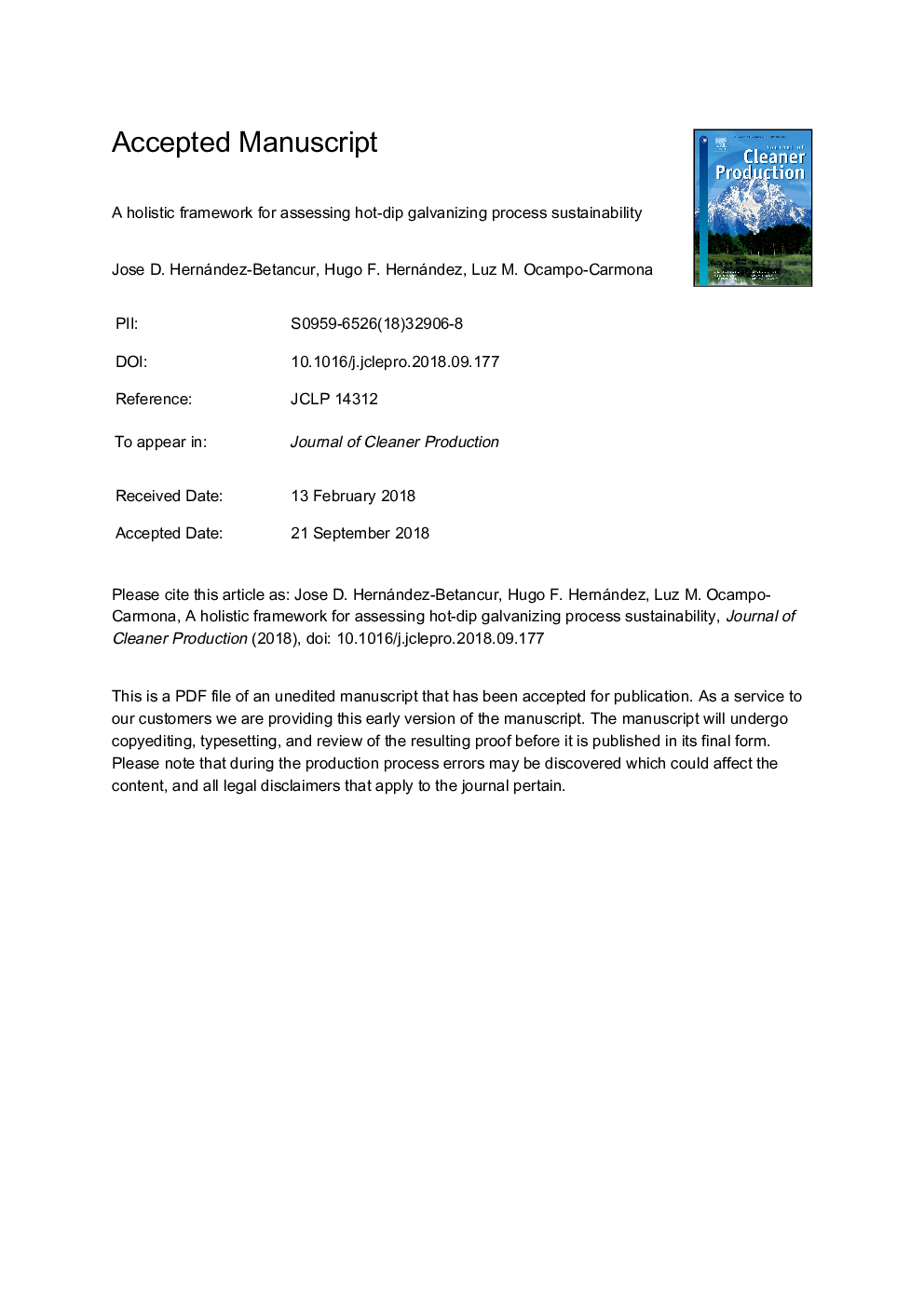| Article ID | Journal | Published Year | Pages | File Type |
|---|---|---|---|---|
| 11019796 | Journal of Cleaner Production | 2019 | 25 Pages |
Abstract
Hot-dip galvanizing is considered one of the most important corrosion protection alternatives for steel; however, its poor environmental performance has been a matter of concern. Even though many researchers have dealt with this topic in the past none of them have jointly dealt with the triple bottom line of sustainable development, and with the random and epistemic uncertainty of its measurement. For that reason, in this work, the sustainability of the hot-dip galvanizing process is investigated integrating: (a) 17 indicators taken from the 4 categories of the GREENSCOPE methodology and one quality performance indicator which is directly related to ISO 1461. (b) The additive utility method for multi-criteria decision-making. (c) The fuzzy analytic hierarchy process used to calculate the relative weights of both indicators and categories by means of a survey. (d) The hierarchical partitioning analysis used for determining the process stages that have a higher impact on sustainability variation, and others useful and suitable statistical tools for data analysis. Furthermore, the proposed framework is tested for a particular hot-dip galvanizing process, considering a random generation of each batch size, steel item characteristics and operating conditions via the kinetic Monte Carlo method. The results show that the stages of pickling and fluxing are critical for the analyzed system and they are not expected to be improved without a significant modification of the process. The proposal outlined in this paper might help designers, process engineers and researchers for a better decision-making process, focusing on the most critical stages while considering the trade-off between the three dimensions of sustainable development.
Related Topics
Physical Sciences and Engineering
Energy
Renewable Energy, Sustainability and the Environment
Authors
Jose D. Hernández-Betancur, Hugo F. Hernández, Luz M. Ocampo-Carmona,
